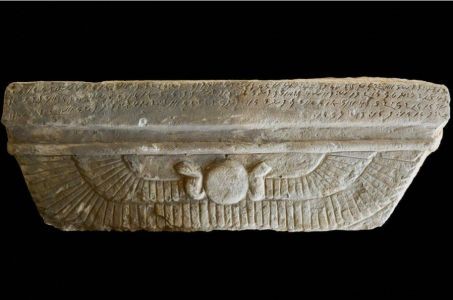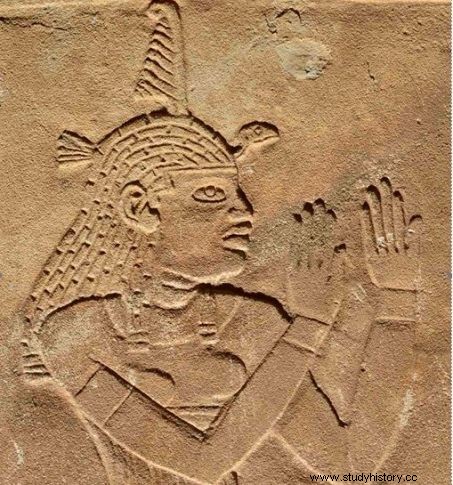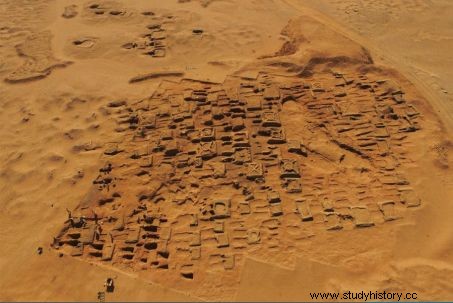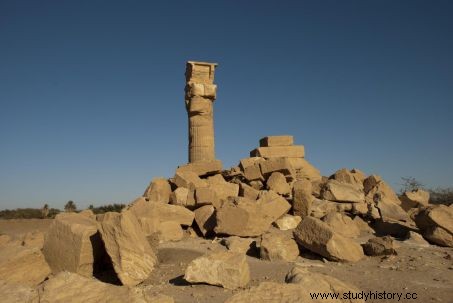In Sudan, at the site of Sedeinga, French archaeologists have unearthed the largest set of Meroitic inscriptions known to date. The oldest purely African ancient writing.
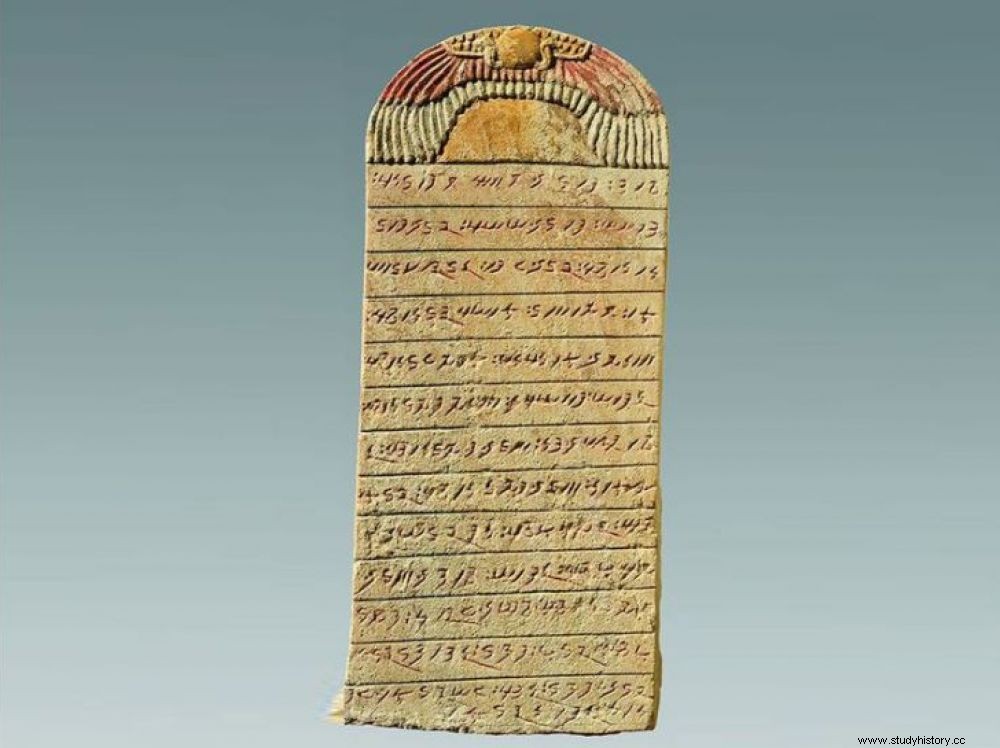
Stele of Ataqeloula and his rare Meroitic writings, discovered in the necropolis of Sedeinga, in Sudan.
EPIGRAPHY. Never have so many inscribed stelae of Meroitic texts, the oldest evidence of purely African ancient writing, been discovered in one place. And it is in the "city of the dead" of Sedeinga, a vast necropolis located between rocky desert and wild banks of the Nile, that were found, in Sudan, buried among a hundred old funerary pyramids today clipped, these 2,300-year-old writings left by the inhabitants of the country of Kush, an African empire contemporary with Ptolemaic Egypt and Rome (read Sciences et Avenir n°783 ). Mixed with decorated lintels and doorposts of chapels, the precious stone tablets covered with inscriptions were brought to light by researchers from the SFDAS, the French Section of the Directorate of Antiquities in Sudan. “The pieces were literally on top of each other and yet in a remarkable state of preservation” , said Vincent Francigny, from the Laboratory of African Anthropology at the Museum of Natural History in New York (United States), co-director of the excavations led by Claude Rilly, world specialist in Meroitic language and writing.
A writing still largely obscure
“These new funerary documents, sources of extreme richness, will allow us to advance in the knowledge of the language of Meroe ” , added the expert, joined by Sciences et Avenir . “The Meroitic writing system, the oldest in sub-Saharan Africa, partially resists us in its understanding, even if we have been able to read it for almost a century”, continues the specialist. Still largely obscure, this writing had been created by the Kushite rulers to transcribe their language, around 250 BC. Until then, only that of the pharaohs of Egypt was used. For unknown reasons, in III e century before our era, the Meroites (from the name of Meroe, the last kingdom of Kush) selected from their powerful neighbor signs that were both hieroglyphic and cursive (demotic) to develop their own writing by adding different phonetic values.
Lintel of burial decorated with Meroitic inscriptions. © Sedeinga Archaeological Mission
Until these recent discoveries, only rare epitaphs were known on stelae and or temples. Among the finds made, there were also representations of the goddess Maat, with characters different from the usual canons inherited from Egyptian religious iconography.
Figure of the goddess Maat, Egyptian deity of order, fairness and peace, unearthed at Sedeinga. © Vincent Francigny / Sedeinga Archaeological Mission
It would even be the first known figure of this deity with African features. On the uprights of funerary chapels where Anubis, the master god of the necropolises, usually appeared on one side, and on the other Isis or his sister Nephthys, the protective deities of the dead, it seems that the goddess Maat, an entity symbolizing order , truth and justice, imposed itself on the Sedeinga site.
Aerial view of the "City of the Dead" in Sedeinga, Sudan. © Sedeinga Archaeological Mission
The impressive cemetery and its hundreds of burial places and vaults was used for several centuries, stretching from the end of the period known as the Kingdoms of Napata (600-300 BC), to the end from the Meroitic period (450 AD). With the sites of Sedeinga and the neighboring island of Sai, French archeology is participating in the study of two major sites in the ancient history of the exceptional Nubian kingdoms of Sudan.
Ruins of the Egyptian temple of Queen Tiyi, located near the Sedeinga necropolis. © Bernadette Arnaud
The Sedeinga website
Reported in the 19
th
century by the Frenchman Frédéric Caillaud, the site of Sedeinga, about a hundred kilometers north of the third cataract of the Nile, on the west bank of the river, had attracted the attention of the Nantes explorer because it housed the ruins of an Egyptian temple dedicated to Queen Tiyi, vestiges of a very ancient pharaonic presence in the region (1500-1100 BC), when the armies of Amenhotep III (Amenhotep III, in Greek) came to annihilate the inhabitants of Kush to punish them for their attempted invasion of Lower Nubia. The Sedeinga necropolis which was discovered nearby covers more than 25 hectares. It housed around a hundred mud brick pyramids and funerary tombs, the oldest dating back to the kingdom of Napata (600-330 BC), then Meroe (between 300 BC and 450 AD).

